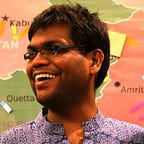Kashmir’s Partial Story
(This book review was first published in Business Standard.)
It is simplistic to frame the communications blockade in Kashmir as a battle between Hinduism and Islam, or even Hindutva and Islamism. India does have a majoritarian government with little respect for democratic institutions, and it ought to be held accountable for human rights violations. However, the erstwhile state of Jammu and Kashmir has a beleaguered history that extends far beyond the present dispensation in Delhi. The reorganization of this state into three union territories — Jammu, Kashmir and Ladakh — must be understood in relation to what has transpired in this region in the past, and India’s aspirations to counter Pakistan and China on a political chessboard where these two play as one team.
Iqbal Chand Malhotra and Maroof Raza’s book Kashmir’s Untold Story: Declassified will hold the interest of readers who are married to the idea that Kashmir is an integral part of India, and that India should do everything it possibly can to defend this claim. Malhotra has studied economics, and worked as a television producer. His grandfather apparently used to spend Sunday afternoons with Maharaja Hari Singh at Bombay’s Royal Western India Turf Club. Raza is a commentator on military and security issues. He used to serve in the Indian Army, and now works as a consulting editor with a news channel on television. What began as a collaboration between them on a documentary film eventually became a joint book project.
Kashmir’s Untold Story: Declassified is a page-turner high on political intrigue but so densely packed with detail that it can be disorienting for readers who are encountering this information for the first time. The chapter titles give the impression that the authors view Kashmir as a crucible of conflict, and not as the home of people who have lived there for centuries. These titles are: ‘Unfathomable Depths’, ‘Cloudy Waters’, ‘Emerging Ripples’, ‘Swelling Crests’, ‘Lashing Waves’, ‘Temperamental Tides’, ‘Stormy Seas’, ‘Emerging Abyss’, ‘Deeper Waters, ‘Rising Tsunami’. Malhotra and Raza are interested in questions of security and strategy from the perspective of a nation state that would like to contain and neutralize all threats to its sovereignty. They do not engage with the sentiments of Kashmiris affected by the ongoing conflict, the impact of militarization on their mental health, their aspirations for self-determination, or their unflinching resistance.
Since the book does not present itself as a people’s history, the authors think that they can get away with downplaying the mass rape of Kashmiri women in Kunan Poshpora in 1991, and the use of pellet guns on unarmed civilians during the wave of protests that followed the killing of Hizbul Mujahideen commander Burhan Wani in 2017. These events have been widely reported but this book, in its refusal to acknowledge what has happened, clearly betrays its ideological sympathies. It is uncritical of the Armed Forces Special Powers Act, and stays away from addressing the issue of disappeared persons, encounter killings and mass graves — all of which are part of the Kashmir story. It makes no effort to show how ordinary Kashmiris who wish to lead a peaceful life have become disposable citizens while their land continues to be valued for its strategic importance.
Malhotra and Raza have undertaken an exhaustive analysis of why the erstwhile state of Jammu and Kashmir has been significant for the British, the Americans, the Russians, and the Chinese at various points of time, and what this has meant for the relationship between India and Pakistan. This conflict might seem bilateral on the surface but it has multiple stakeholders. There are no permanent allies or enemies in the world of politics. Equations change when interests align in mutually beneficial ways. This book will help readers appreciate why Prime Minister Narendra Modi and Prime Minister Imran Khan are pursuing diplomatic channels to gather support from various countries. The Cold War of yore might be over but the international community is still divided into camps. India and Pakistan need to know who will have their back when the time comes.
The authors also expose how Pakistan has sought to weaponize Islam in Kashmir by promoting a puritanical version of the faith through Wahhabi madrasas sustained using illegal funds transferred across the Line of Control. This assault on Kashmir’s syncretic culture and Sufi traditions from Pakistan-backed Islamist outfits has conflated azadi with jihad, and has given a religious subtext to an indigenous freedom movement. It is evident that Pakistan’s interest in Kashmir, just like India’s, is tied to its natural resources and strategic location. If Pakistan cared about Muslims, it would not overlook Chinese atrocities against Uighur Muslims, or wage a war against its own Pashtun and Baloch citizens. What it cares about is Chinese money.
